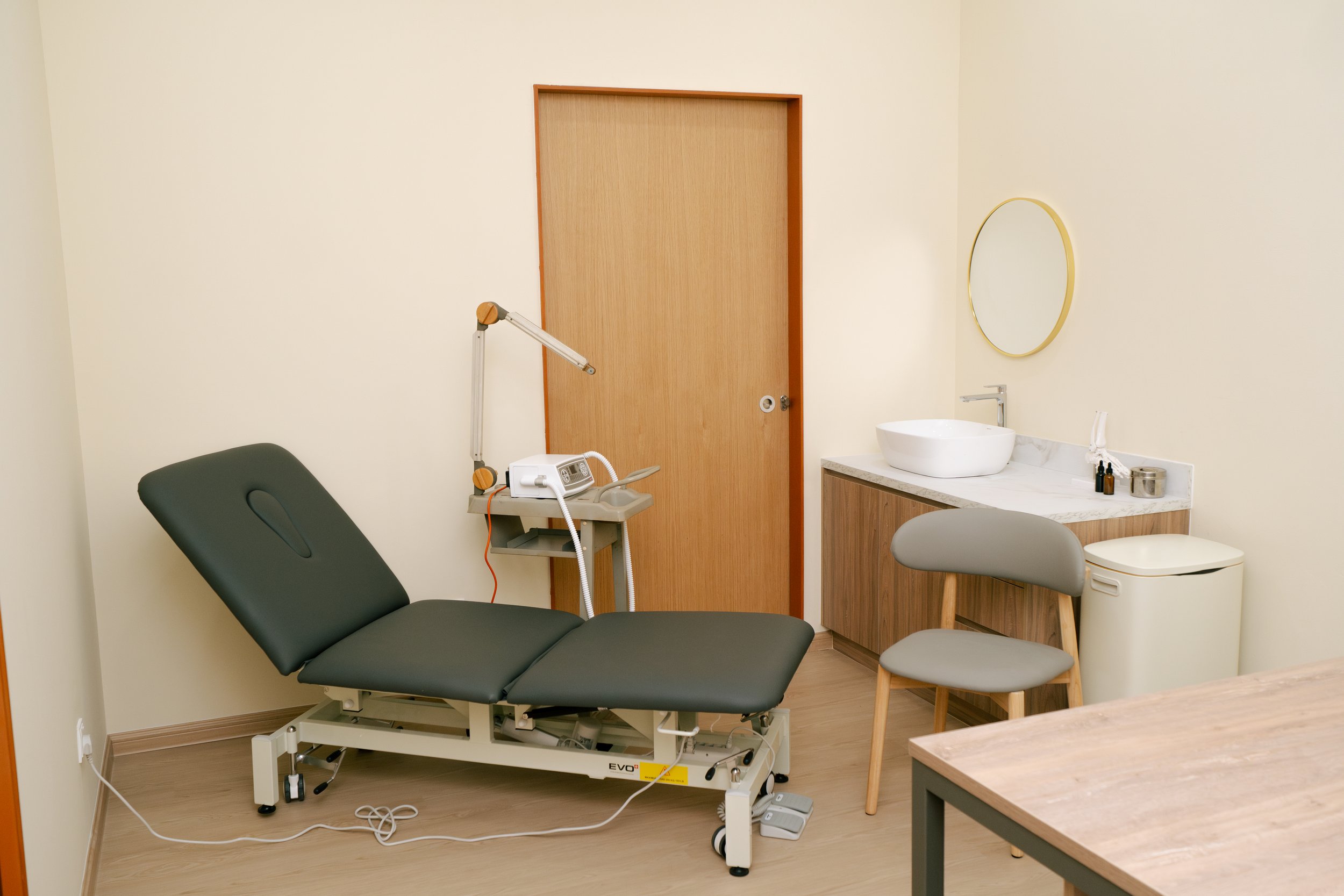
Bunions
What is a Bunion?
A bunion (medically known as hallux valgus) is a bony bump that forms at the base of your big toe, where it joins the foot. Over time, the joint becomes misaligned — pushing the big toe inward toward the others and causing the joint to stick out. This can lead to pain, swelling, difficulty wearing shoes, and progressive joint deformity.
Common Causes
Bunions typically develop over time and are influenced by:
Poor-fitting shoes, especially narrow or high-heeled footwear
Genetics – a family history of bunions or flat feet
Flat feet or overpronation
Joint conditions, such as arthritis
Biomechanical issues with foot structure or gait
Signs & Symptoms
You might have a bunion if you notice:
A visible bump at the side of your big toe
Swelling, redness, or soreness around the joint
Pain while walking or wearing certain shoes
Restricted movement in your big toe
Development of corns or calluses where toes overlap
How Bunions Are Diagnosed
At KL Foot Specialist Podiatry, we perform a detailed biomechanical assessment including:
Physical examination of foot posture and joint mobility
Digital gait analysis and pressure mapping
Referral for foot X-rays if needed to assess joint alignment
We aim to identify the root biomechanical or footwear-related causes; not just the symptoms.
Treatment Options
At KL Foot Specialist Podiatry, our approach to bunion treatment is designed to do three main things:
Relieve pain and inflammation
Slow or stop the progression of the bunion
Improve your foot function and comfort in daily life
Here’s how we help you achieve those goals without surgery:
Custom Orthotics
These are prescribed insoles tailored to your foot shape and walking pattern. They help redistribute pressure away from the bunion joint, improve alignment, and correct any underlying biomechanical issues (like overpronation) that are contributing to the bunion’s progression.Supportive Footwear Advice
We guide you in selecting wide-fitting, structured shoes with a deep toe box. The right footwear prevents rubbing and compression of the bunion, reducing daily pain and preventing it from getting worse.Toe Spacers or Splints
These devices gently separate and realign the big toe, reducing joint pressure and helping improve comfort when walking or wearing shoes. While they don’t “cure” bunions, they’re helpful in managing symptoms and preventing overlapping toes.Shockwave Therapy
This non-invasive treatment uses acoustic waves to stimulate blood flow and reduce chronic inflammation around the bunion joint. It’s especially helpful if you're experiencing ongoing pain despite footwear changes or orthotics.Stretching & Strengthening Exercises
Targeted rehabilitation improves the flexibility of stiff joints and strengthens the small muscles that stabilize the foot. This can help slow bunion progression and ease pain caused by poor mechanics or compensatory movements.Skin & Nail Care
Bunions often lead to secondary issues like corns or ingrown toenails due to friction. We address these issues in-clinic to reduce pain and prevent infection or worsening deformity.
Surgery is rarely the first option. Many of our patients see significant relief with conservative treatment - especially when they address the issue early.
What Happens If Left Untreated?
Without intervention, bunions typically worsen over time. You may experience:
Chronic pain and inflammation
Increased deformity of the big toe and crowding of other toes
Secondary problems like hammer toes, calluses, or corns
Difficulty finding shoes that fit comfortably
Long-term joint damage or arthritis
When to See a Podiatrist
You should book a consultation if:
You notice a visible bump or misalignment at the base of your big toe
Your foot pain is interfering with walking or daily activity
Shoes are becoming uncomfortable or tight
Over-the-counter pads or home remedies aren’t helping
At KL Foot Specialist Podiatry, we offer evidence-based solutions to help you walk pain-free again - without jumping straight to surgery.
Frequently Asked Questions
-
The best treatment depends on the severity of the bunion. For most people, non-surgical options such as custom orthotics, toe spacers, bunion padding, and shockwave therapy can help relieve pain and prevent progression. Severe cases may need surgical referral.
-
No, bunions are structural deformities and do not resolve without treatment. While symptoms may temporarily reduce, the underlying misalignment of the toe will remain and can worsen over time without proper care.
-
You should consult a podiatrist if you experience frequent toe pain, swelling, difficulty wearing shoes, or visible bump progression. Early intervention can prevent long-term complications and reduce the need for surgery.
-
Poor footwear like narrow, pointed shoes or high heels can contribute to bunions by putting pressure on the toe joint. However, genetics, foot structure, and gait abnormalities also play major roles.
-
Yes, hormonal changes and increased weight during pregnancy can worsen bunion pain due to ligament laxity and pressure on the feet. Podiatry care during pregnancy can help ease discomfort safely.
-
Bunion splints can help provide temporary relief and improve alignment at rest, but they don’t reverse the deformity. They're best used alongside orthotics and other podiatric care for long-term results.
-
Yes. At KL Foot Specialist Podiatry, we specialise in non-surgical bunion treatments that aim to reduce pain, improve alignment, and delay or avoid surgery — especially in mild to moderate cases.
Don’t Let Bunions Get in the Way of Your Life
If you're struggling with bunion pain or noticing a worsening toe deformity, it’s time to take action. At KL Foot Specialist Podiatry, we offer personalised, non-surgical treatments to help reduce pain, restore function, and keep you moving comfortably.
Book your consultation today and take the first step toward healthier, pain-free feet.
